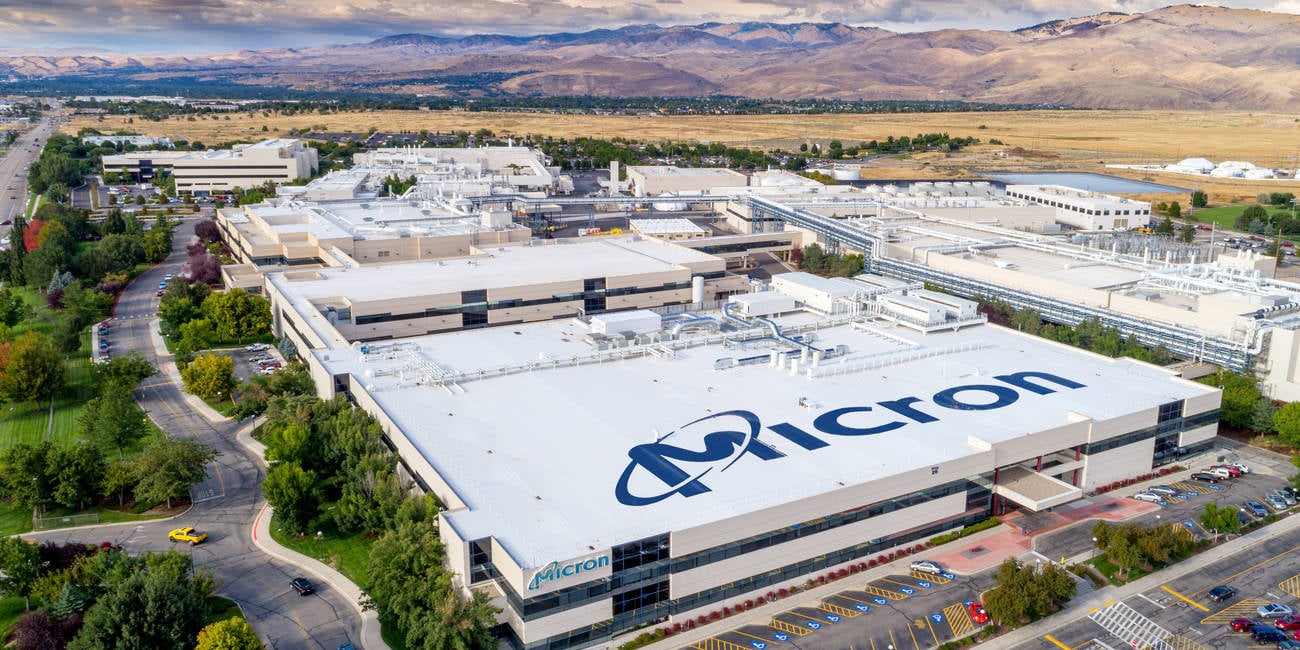Japan Confirms ¥192 Billion Will Flow To Help Micron Build Hiroshima Plant

Japan's Ministry of Economy, Trade, and Industry, has confirmed it will fund Micron Technology's planned memory plant in Hiroshima to the tune of ¥192 billion ($1.3 billion), labelling the sum an investment in the nation's semiconductor industry.
Minister Yasutoshi Nishimura yesterday announced the funding – which was first dangled in May 2023, when Micron discussed plans to expand its Hiroshima presence.
At the time, Micron planned to spend $3.7 billion to bring extreme ultraviolet (EUV) technology to its Hiroshima fab for the manufacturing of 1-gamma DRAM chips.
Nishimura yesterday confirmed that plan, talking up EUV as just the thing to get local semiconductor manufacturing ready to deliver as demand booms for AI and self-driving cars.
The minister noted that Micron's revenue slumped by almost half over the last year but expressed confidence the market will rebound and argued now is therefore the ideal moment at which to ensure Japan is ready once sales surge.
Nishimura also welcomed the prospect of greater self-sufficiency – even though Micron is based in the United States.
As politicians everywhere will do, he also pointed out that the factory will bring jobs – both at Micron and eventually across the semiconductor industry. He added a Japanese observation to that remark, suggesting the factory will bring young people to the region and help to counter declining birth rates.
The $1.3 billion Japan will send Micron's way is tiny compared to the $52.7 billion the US government's CHIPS Act will dole out, or the €43 billion($47 billion) fund created by the European Union's efforts.
Japan has already signalled its intention to chip in with help for chipmakers TSMC, Kioxia, and Lapidus in other locations – but without an overarching structure like a CHIPS Act.
- Uncle Sam to tighten chip export chokehold on China... again
- Intel starts mass production on Intel 4 node using EUV in Irish fab
- Korea's FTC fines Broadcom $14.3M for pushing 'unfair' deal onto Samsung
- SK hynix ships blazing fast HBM3E DRAM samples – but most customers have to wait
Japan's semiconductor industry was a global leader in decades past, but more recently it's been overtaken by offshore rivals as local manufacturers focus on commodity products.
While commodities are reliable earners, big investments more often flow to newer tech. Japan's economic planners will also be aware that geopolitical tensions have chipmakers looking for alternatives to operating in China and Taiwan. Analyst firm IDC yesterday opined that Taiwan's share of the wafer manufacturing market, as well as packaging and testing, will drop by 2027 – to 43 percent and 47 percent respectively, down from 46 percent and 51 percent today.
The CHIPS Acts, Japan's support for Micron, and India's subsidies to attract semiconductor manufacturers suggest that as chipmakers look to diversify, they won't struggle to find governments willing to help. ®
From Chip War To Cloud War: The Next Frontier In Global Tech Competition
The global chip war, characterized by intense competition among nations and corporations for supremacy in semiconductor ... Read more
The High Stakes Of Tech Regulation: Security Risks And Market Dynamics
The influence of tech giants in the global economy continues to grow, raising crucial questions about how to balance sec... Read more
The Tyranny Of Instagram Interiors: Why It's Time To Break Free From Algorithm-Driven Aesthetics
Instagram has become a dominant force in shaping interior design trends, offering a seemingly endless stream of inspirat... Read more
The Data Crunch In AI: Strategies For Sustainability
Exploring solutions to the imminent exhaustion of internet data for AI training.As the artificial intelligence (AI) indu... Read more
Google Abandons Four-Year Effort To Remove Cookies From Chrome Browser
After four years of dedicated effort, Google has decided to abandon its plan to remove third-party cookies from its Chro... Read more
LinkedIn Embraces AI And Gamification To Drive User Engagement And Revenue
In an effort to tackle slowing revenue growth and enhance user engagement, LinkedIn is turning to artificial intelligenc... Read more

